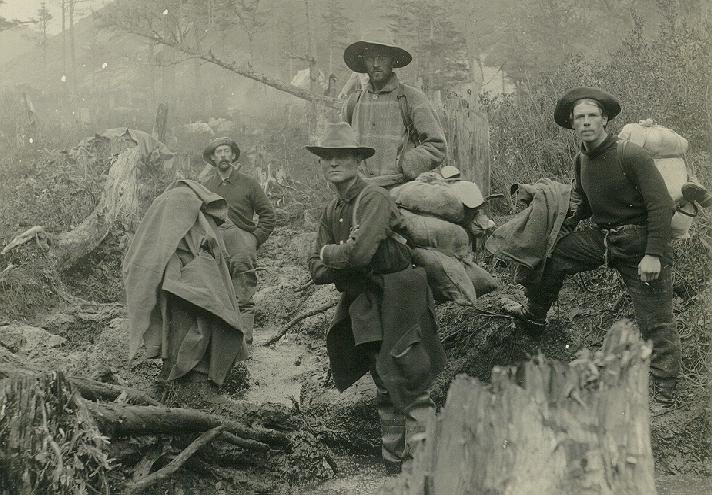Klondike Gold Rush: The Perilous Journey North

Stampeders near Sheep Camp on the Chilkoot trail. 1897.
~ Detail from LaRoche 10042.
Cries of "Gold! Gold! Gold!" sent over 100,000 optimistic "stampeders" rushing to Dawson City and the Klondike gold fields in 1897 and 1898. They believed riches lay waiting for those who could reach this remote Canadian region.
This exhibit highlights their journey north. For most, this journey was the most challenging and time-consuming aspect of the gold rush. Stampeders were physically unprepared and poorly equipped for the severe northern climate and terrain. Some died and many abandoned the journey. About 40,000 people reached the Klondike, only four of every ten who tried.
The first major Klondike gold discovery occurred on August 16, 1896. Local miners soon staked claims and established the town of Dawson. Official word of the strike did not reach the outside for nearly a year because the Yukon River froze in late September and prevented communication.
Continue to next section, "The Rush Begins"
Copyright and Credits:
This web exhibition was prepared by U.W. Museology student Rebecca Hackman. It is based on an exhibition prepared by Ms. Hackman and the University of Washington Libraries' Special Collections and Preservation Division shown in the Special Collections lobby in the Basement, South Wing of the Allen Library from March 26, 1997 to September 1997.
This exhibition is copyrighted by the University of Washington Libraries. The exhibition may be used online or parts of it downloaded for personal use or the URL for the exhibition included in another electronic document. All images in this web exhibition are from the Special Collections Division. For information on reproductions of the images and use guidelines contact Special Collections.